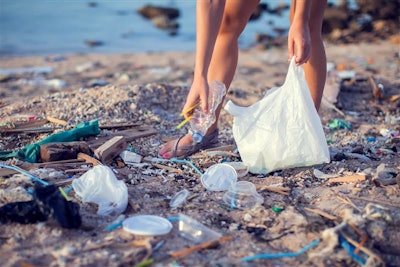
On the go and don't have time to read the article? Click here to listen instead!
While restaurants and other foodservice outlets had to shut down or modify their indoor dining operations, the world shifted towards takeout options. Taking out foodservice products helped create a sense of normalcy during the most unnormal time in our recent history for customers while keeping many restaurants in business.
At the same time, many regulations regarding sustainability paused as officials tried to navigate the Coronavirus (COVID-19) disease. The FDA and other government organizations shut down on-site auditing to keep person-to-person contact low and other policies such as single-use plastic bans were paused in the early days when little was known about the virus.
From personal experience, I witnessed this happen in my own town where a district-wide plastic bag ban was put into place in 2018, only to be paused during the pandemic and eventually a repealing process. Single-use plastic bans were growing significantly in the United States prior to the pandemic, but due to fear of COVID-19 spread these bans were paused, just like in my town.
A recent feature from CNBC went into detail about this, with one source explaining that demand for flexible packaging, which is made up of mostly single-use plastic, increased by 4% to 5% in a year during the beginning of the pandemic. We’ve come so far in the United States in reducing unnecessary waste like this only to fall back during a crisis, which is completely understandable. But it can be helped too!
A recent expert column from zero waste manager at World Centric Lauren Olson explains the possible benefits and ways restaurants can switch to new, innovative and compostable products for takeout instead of single-use plastics and Styrofoam. Prior to my career as a business journalist, I worked in the service industry for many years and saw this switch firsthand. While the cost of these new containers and silverware are slightly higher, the switch is hardly noticeable. And, many of these new products are not paper-based, eliminating the need to cut decimate rain forests in the process, like straws made out of avocado pits.
Next month we celebrate Earth Day, which prompted me to focus on sustainability for the entire month of April. I hope you come on this journey with me to see what else can be done in the supply chain to reduce our waste and learn why it truly is a problem that can be solved.


















